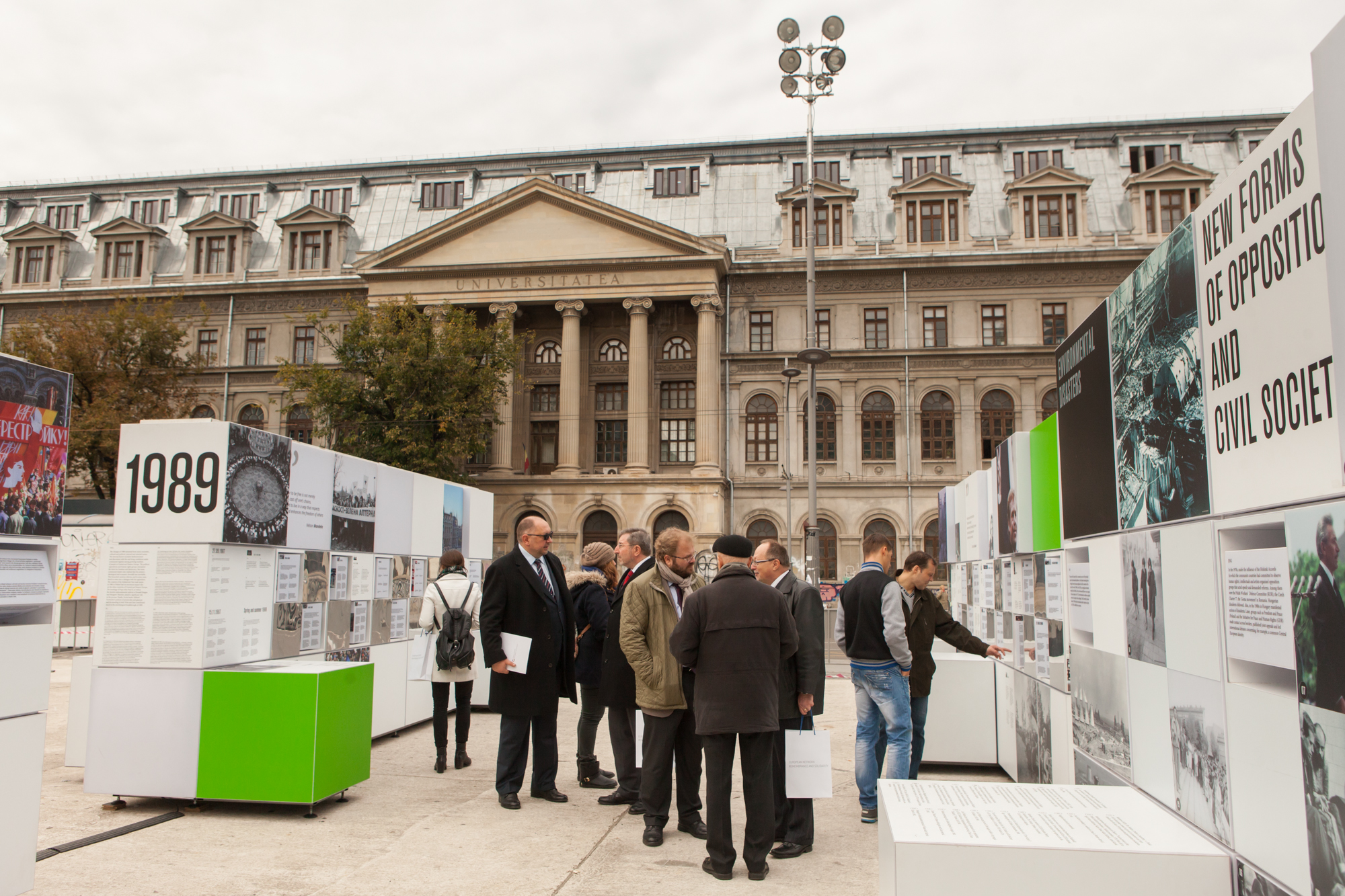The exhibition in Bucharest was opened on 14 October and will be presented at the University Square (Piata Universitatii) till 4 November.
The exhibition “Freedom Express. Roads to 1989. East-Central Europe 1939-1989” was officially opened in Bucharest at the University Square on 14 October by Irina Cajal-Marin, Secretary of State within the Ministry of Culture, prof. Jan Rydel on behalf of the ENRS, and the Ambassadors of the member countries of the ENRS in Romania – His Excellency Ján Gabor, the Ambassador of Slovak Republic; His Excellency Werner Hans Lauk, the Ambassador of the Federal Republic of Germany; His Excellency Botond Zákonyi, the Ambassador of Hungary, and His Excellency Marcin Wilczek, the Ambassador of the Polish Republic.
During the opening ceremony Ms Cajal-Marin said that the exhibition shows pictures of the process through which a series of European countries gained back their freedom and dignity from the communist regime. It aims at raising public awareness regarding the negative effects of the dictatorships before 1989 and to present the young generation the importance of freedom, so that we can appreciate its benefits. We need more examples similar to the exhibition we are opening today and we have present such projects in many more places in order to show people what happened in the past, so that everybody can learn and make the difference between good and bad, suffering and wellbeing, right and wrong – added the Secretary of State.
The organizers of the exhibition could not have chosen a better place in Bucharest to present this exhibition. University Square has been and still is a place with a special meaning for Romania’s history, with a special symbolic meaning for freedom in Romania – said His Excellency Werner Hans Lauk, the Ambassador of the Federal Republic of Germany in Romania.
Prof. Jan Rydel, the chairman of the ENRS Steering Committee stressed that it is very important for the organisers to present the exhibition in Bucharest, at the University Square, a place crossed each day by a number of young people, who belong to the generation which has not experienced life under any regime. 26 years ago, the old system was still in power in Romania and the revolution was to start in two month time, ending the Autumn of Nations – added prof. Rydel.
Considering the location of this exhibition, I hope that all the passers-by will stop for a moment and contemplate on our mutual past and future - concluded the Ambassador of Poland, His Excellency Marcin Wilczek.
The exhibition, designed by historians associated with European Network Remembrance and Solidarity, documents the complicated process through which this part of Europe regained its freedom from communist dictatorship. Presented earlier in Berlin, Brussels, and Warsaw the exhibition concentrates on various ways in which civil liberties were limited in the former communist bloc and on attempts made to regain them. It focuses especially on the question of what connects and divides remembrance of the events that preceded the fall of communism in Central and Eastern Europe.
The exhibition is available for visitors at the University Square till 4 November. Later in November it will be presented in Bratislava.
